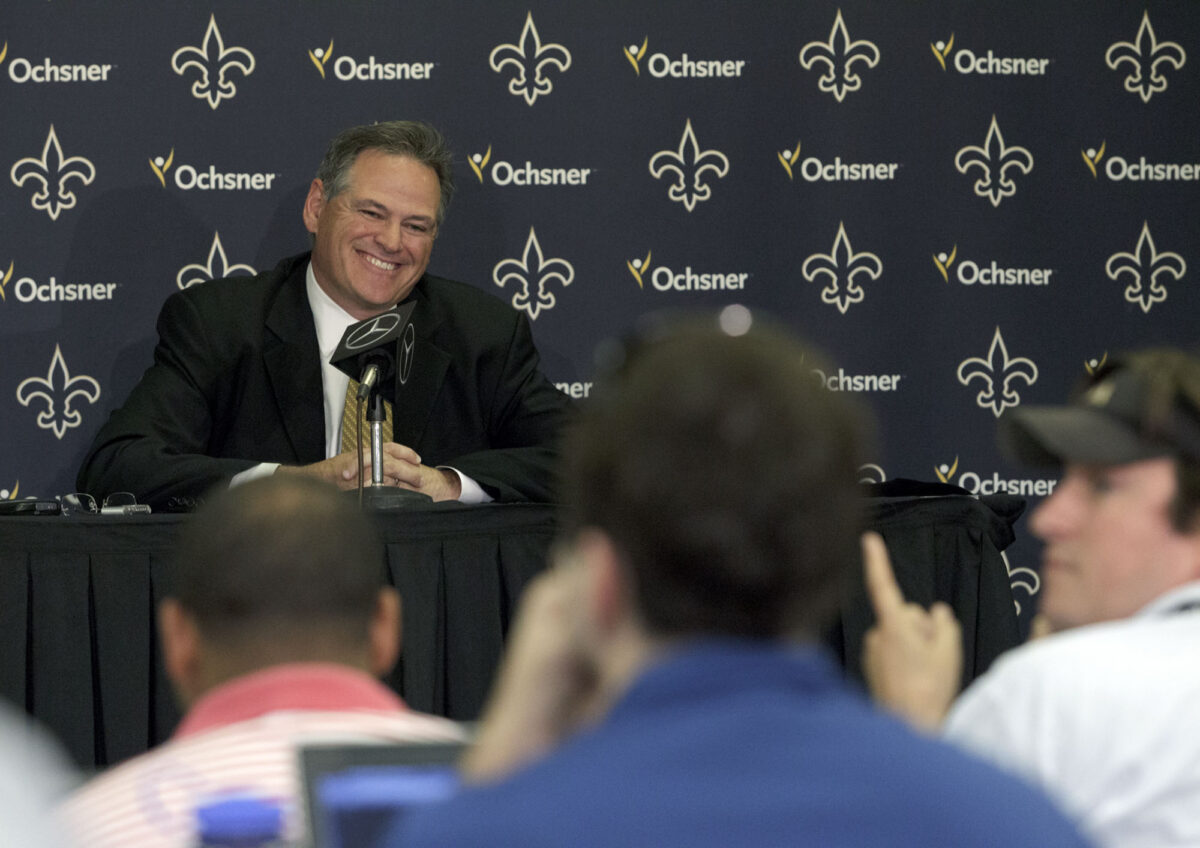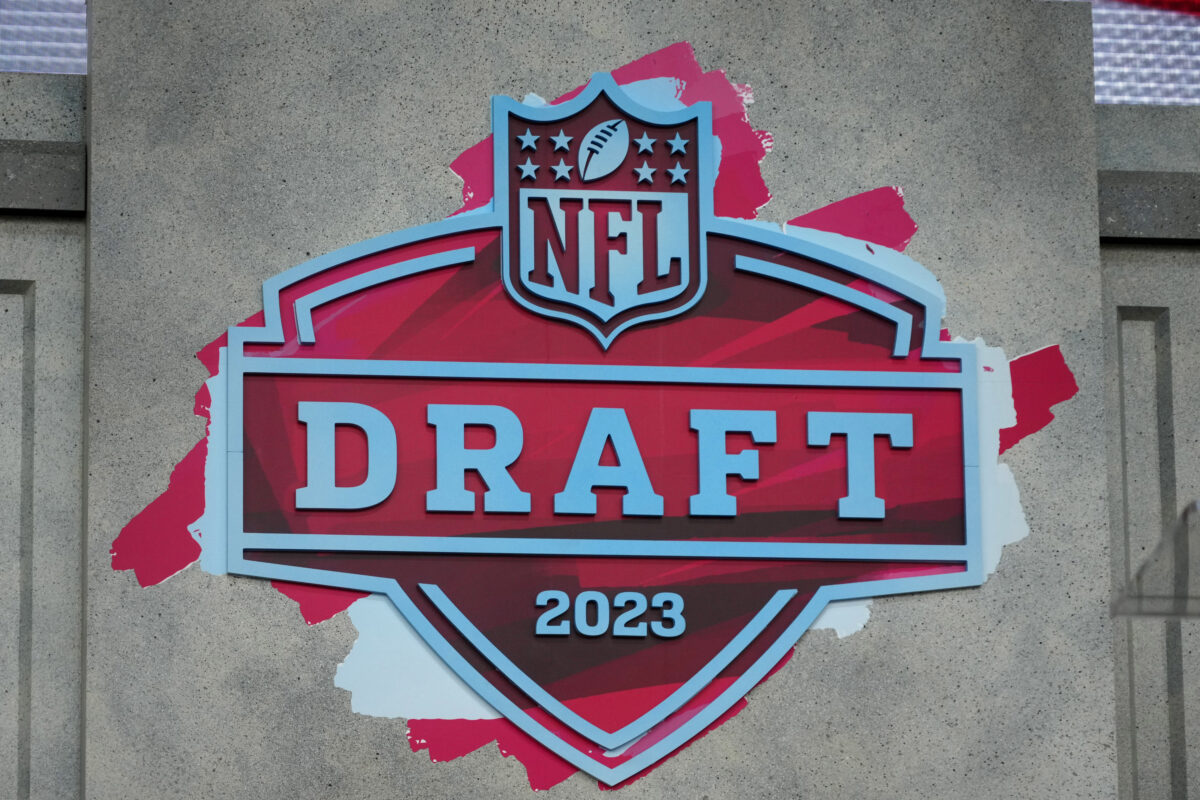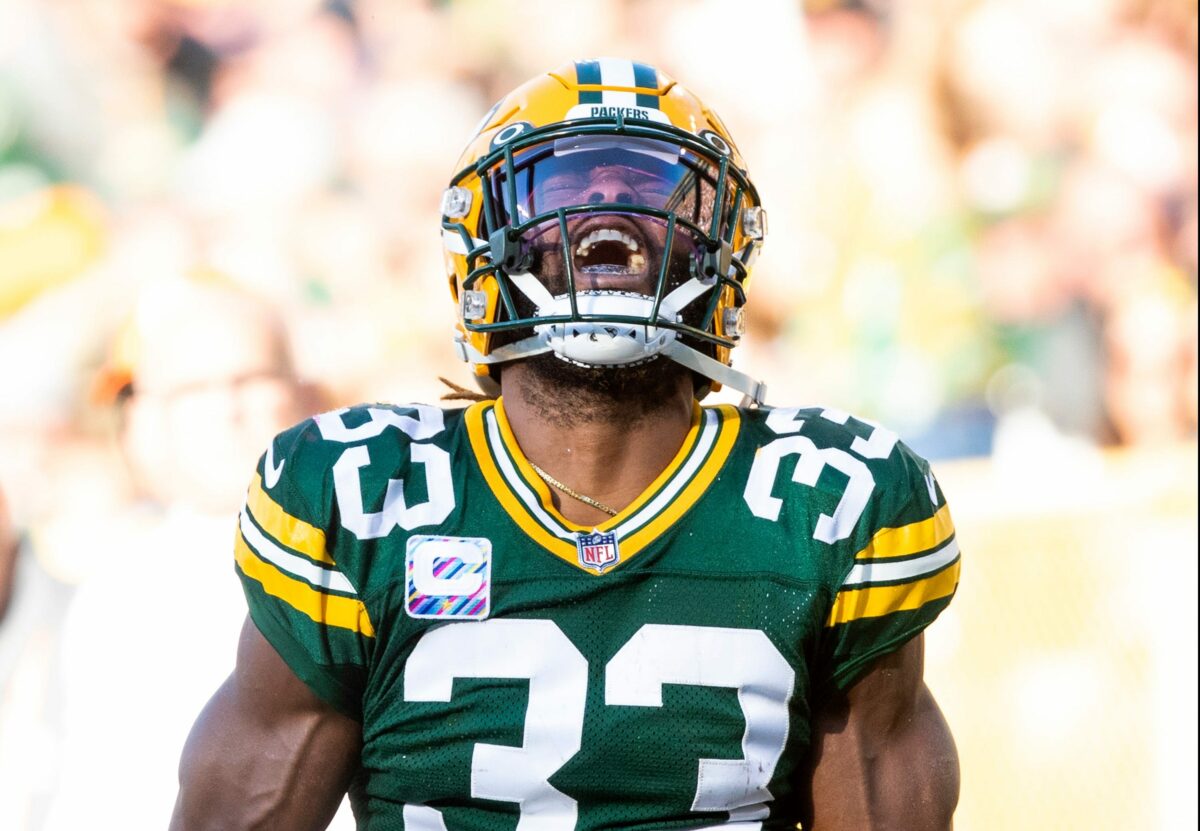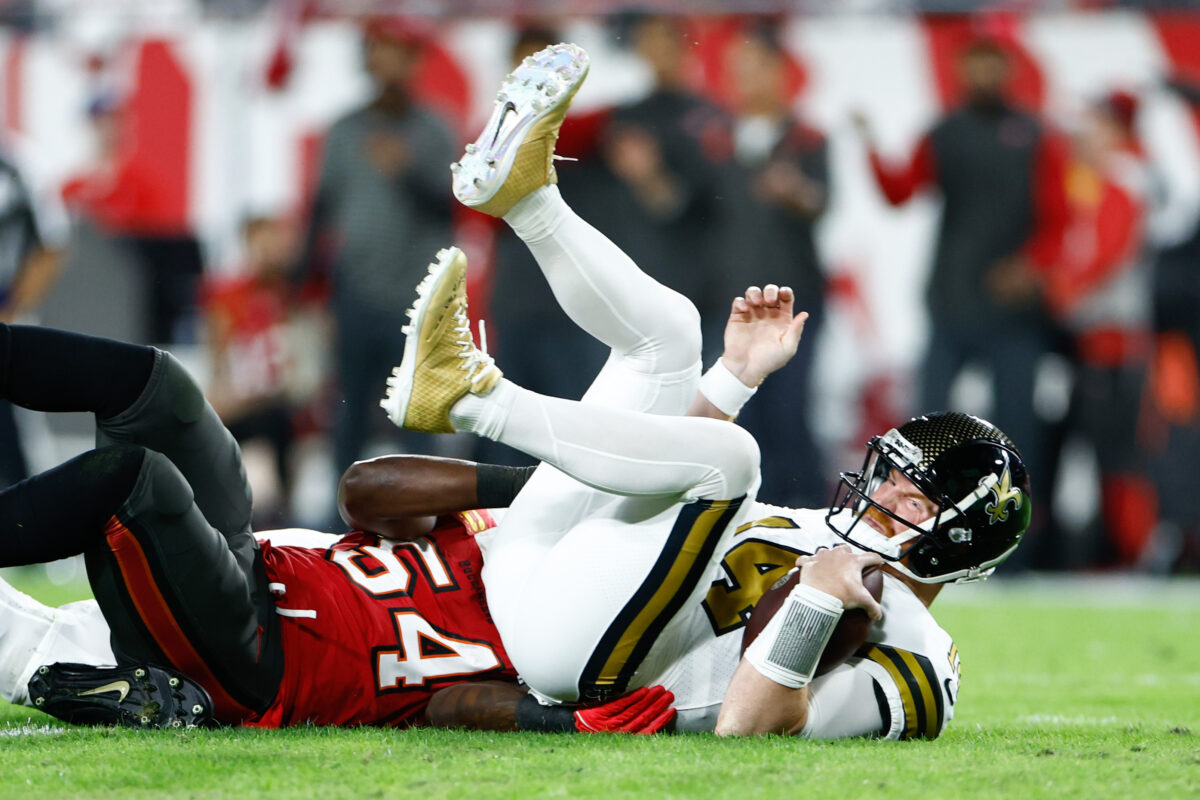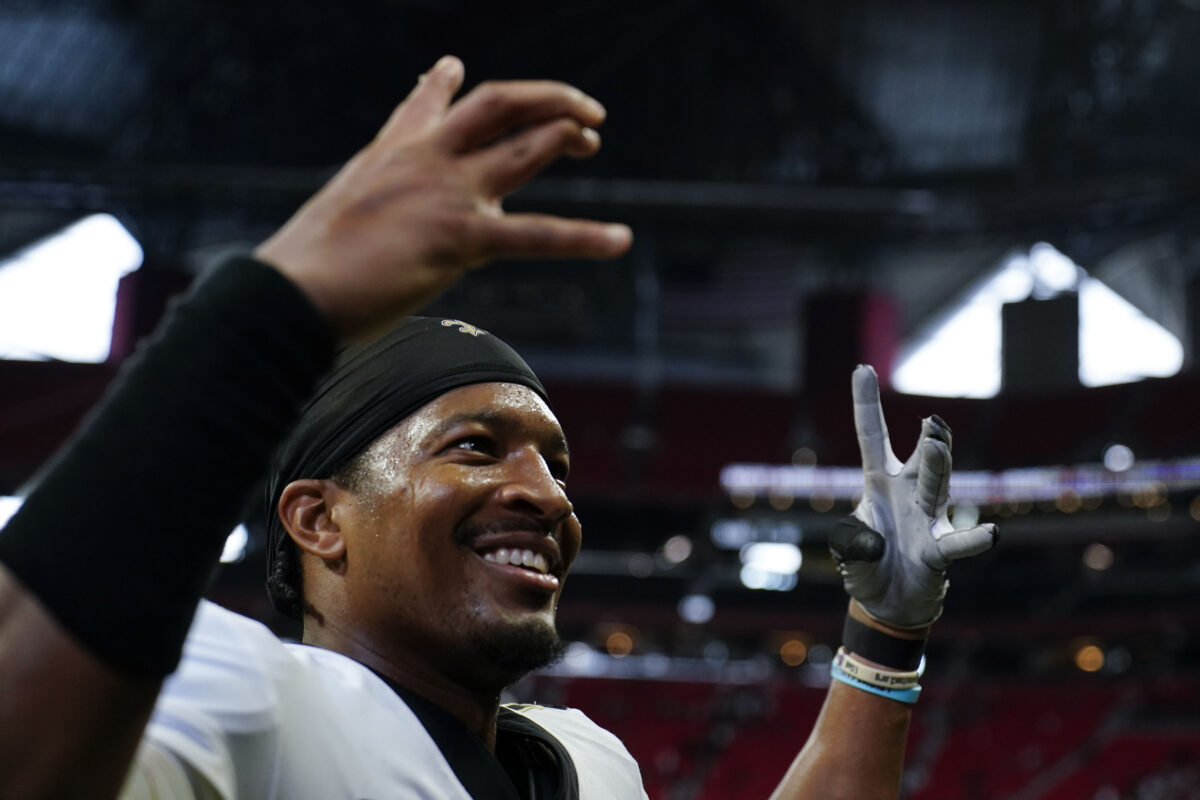The New Orleans Saints rank among the most-penalized NFL teams, but their opponents are playing uncharacteristically clean against them.
The New Orleans Saints have overcome plenty of adversity this year, ranging from the five-week loss of starting quarterback Drew Brees to an opening-half schedule that saw them travel to play four opponents on the road in their first six weeks. They’ve also dealt with extra attention from the NFL’s referees and their officiating crews. That’s just part of the game, but this season (and in recent weeks specifically), it’s been unprecedented.
Check out the chart above from Jeff Asher of AH Datalytics, sourced from Pro Football Reference. From what we can see there, the Saints and their opponents have largely been penalized at similar rates; New Orleans played largely-clean football from 2006 to 2009, though a brief window from 2015 to 2017 saw their sloppy play benefit their opponents. But this latest surge in fouls has been very clearly one-sided.
The Saints are averaging 7.9 penalties per game, which ranks eighth-worst in the NFL. That’s turned into 68.3 penalty yards per game, nearly the equivalent of an offensive drive downfield after good starting field position. It’s kept a number of opposing drives alive, with New Orleans’ opponents gaining the second-most first downs by penalty per game (2.8) in the league.
And as the chart above demonstrates, the teams playing the Saints are not being held to the same standard. Those opponents are averaging the fewest penalties per game (5.3) and penalty yards surrendered per game (40.6) in football, granting the Saints the second-fewest first downs by penalty per game (0.92) around the NFL.
In a perfect world, officials would keep things fair and balanced and refuse to let one team get away with foul-worthy plays while turning a blind eye to their opponents. However, so long as people — with limited vision and too much autonomy to make judgment calls — are in charge, mistakes are going to happen. You would expect one team to end the day with fewer penalties than their opponent; typically speaking, some teams are better-coached and more disciplined than others. But the difference between how the Saints are being judged and how their opponents are being officiated deserves inspection.
One possible answer for that disparity could be that the Saints are playing a schedule filled with the league’s fewest-penalized teams. That’s not the case. New Orleans has played many teams ranked inside the top half of the league in penalties and penalty yards per game. We’ve broken down their penalty stats per game against what they were fouled for in the Saints’ games in the chart below:

This illustrates how officiating was nearly even to start the year, if marginally beneficial to the Saints. But over time (especially in recent weeks) there has been a visible shift in opposing teams being fouled less often against the Saints than in their typical games. Things bottomed out in Week 6 against the Jacksonville Jaguars, when they were fouled for 6.8 penalties and 61.5 penalty yards below their season averages. There’s been a clear shift since that game.
On the whole, the Saints’ opponents have averaged 2.2 fewer penalties per game and 21.4 fewer penalty yards per game when playing against New Orleans than in their typical outings. In a vacuum, that isn’t much. But when considered in the big picture, those numbers snowball into 35.2 penalties and 342.4 penalty yards over a 16-game season.
So what gives? Are the Saints playing sloppy, while their opponents suddenly turn in their cleanest games of the year back-to-back-to-back? Or are the officials allowing the teams playing the Saints to get away with the ticky-tack fouls that happen on every down (holding, hands-to-the-face, that sort of thing) while not giving New Orleans the same leeway? It’s bizarre to say the least.
A big part of the problem is limited sample size. Analyzing the game from a quantifiable perspective like this works in other sports like baseball and basketball because there are literally hundreds (if not thousands) of data points to work with, whereas football begins and ends very quickly, relying on a 16-game regular season and four-stage postseason tournament. Instances like this are easy to explain away as an outlier, a freak accident, against what recent history informs us. That said, it’s totally understandable if fans aren’t satisfied with that explanation. It’s frustrating to see your team get fouled for what the other squad gets away with, week in and week out.
For his part, Saints coach Sean Payton isn’t going to chalk up these lost plays and surrendered yards to any biases from the NFL’s officials. He’s preached the need for improved coaching from his staff as well as better discipline from his players, summing up the situation after their penalty-filled Week 12 win over the Carolina Panthers as, “We are going to need to be smarter in bigger games.” That makes sense, because it’s all he and his team can control.
Hopefully the Saints can clean it up and give the officials fewer opportunities to impact their games. Despite dealing with quality opponents and a fine-combed approach by the zebras, the Saints are still 10-2 and owners of their third consecutive NFC South title.
[vertical-gallery id=23629]
